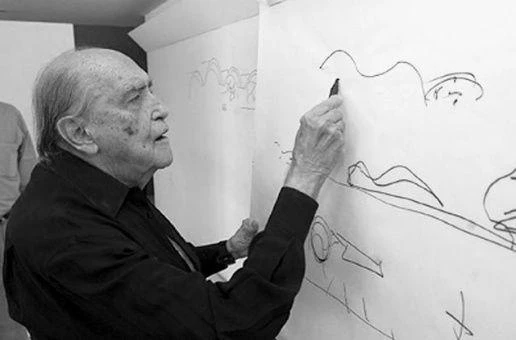
On 5th December 2012, ten days before his 105th birthday and six months after the death of his octogenarian daughter, the longest-living master of the Modern Movement passed away in Rio de Janeiro, the city where he was born and where he maintained a practice for seventy-strong years. Universally admired, his oeuvre is today a symbol of Brazil’s modernity, of the strengthening of its national consciousness through the creation of Brasilia, and also of the country’s desire to be a leading presence in the international scene. For many decades Niemeyer was for Brazilians an at once popular and mythical figure, and on his death he was given the honors due to a statesman.
Niemeyer studied architecture at the School of Fine Arts, on principles of an academic education that he disdained. His genius did not come to the fore until later. In the mid-1930s he worked in the studio of Lucio Costa, and had the opportunity to accompany Le Corbusier to Rio de Janeiro; a relationship that proved an inducement for a creativity that flourished when he managed to solve the deadend road of the Corbusian project for the Ministry of Health and Education.
From then on, Costa’s confidence in the young talent had no limits. This translated into closeness to reformist politicians like Juscelino Kubitschek, who appreciated his way of integrating vernacular Brazilian tradition with modern architecture. The commissions came on their own: first the projects in Pampulha and later the creation of Brasilia, where he carried out over a hundred buildings in addition to the Metropolitan Cathedral and the National Congress, both now universal icons.
A man of political convictions, his 1940 enlistment in the Communist Party – which his supported with anachronical coherence throughout his life – did not prevent him from working with all the regimes that followed Kubitschek, although his clashes with the military dictatorship led him into a short exile in France. This would be the germ of projects like the headquarters of the French Communist Party or the Cultural Center in Le Havre. The sensuality of his forms, far from diminishing, became more accentuated and in a way repetitive. Niemeyer nevertheless remained able to build works as beautiful as the Museum of Niterói (1996).





